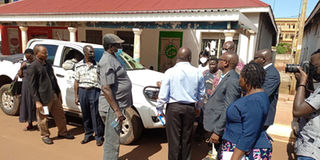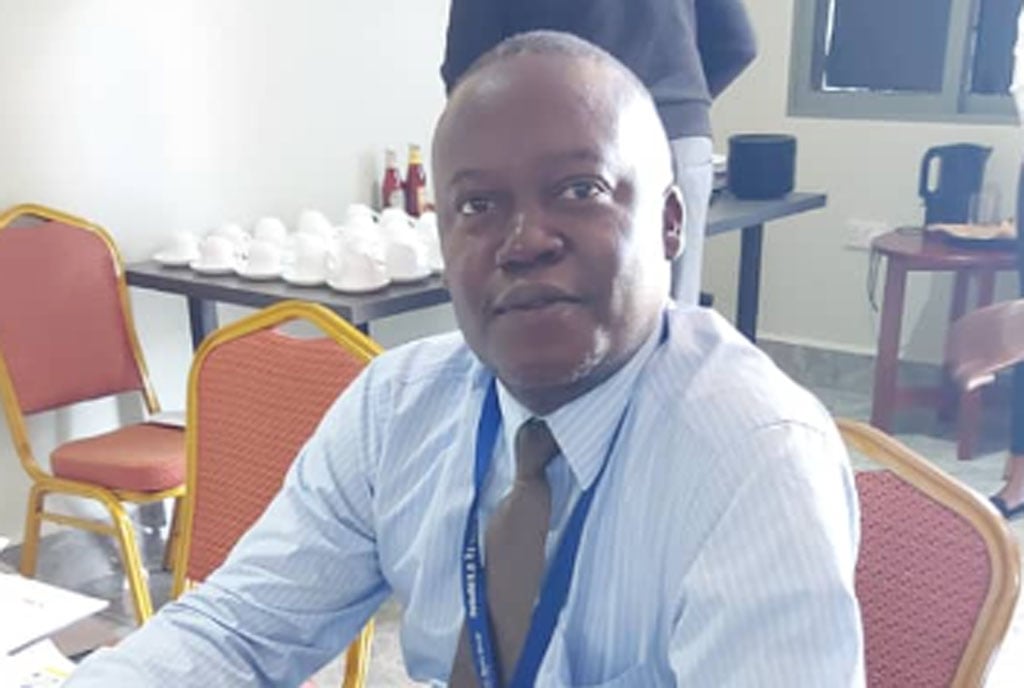World Bank set to review USMID projects this week

Mr Martin Onyach Olaa, the USMID task team leader at the World Bank (in cap), with Jinja City officials tour some USMID projects last Wednesday. PHOTO / PHILIP WAFULA
What you need to know:
- Mr Peter Okocha Kasolo, the mayor, said the elevation from a municipality saw areas such as Budondo, Mafubira and Bugembe annexed to the city.
The World Bank is this week expected to review the status of Uganda Support to Municipal Infrastructure Development Programme [USMID] projects in the country.
This was revealed by Mr Martin Onyach Olaa, the USMID task team leader at the World Bank, who led a delegation to Jinja City last week to supervise the Shs20.5b roadworks ahead of the mid-term review mission.
The World Bank has since 2013/2014 Financial Year been implementing USMID projects in 25 municipalities, some of which were elevated to city status, including Jinja, and such projects are expected to end in 2023.
In Jinja, the project which involves upgrading Eng Dhikusoka, Main Street extension to State Lodge, Busoga Avenue, street lighting, drainage and pedestrian walkways, ran from February 2020 to January 5.
According to Mr Olaa, the review was earlier supposed to be done in Mbale City, but it was delayed due to the Covid-19 pandemic, adding that it would now go ahead in Kampala this week on a date he did not mention.
“World Bank is committed to supporting Uganda’s urban sector in the long or mid-term, but that will depend on this week’s mid-term review,” he said.
He added: “During the review, we shall get an independent assessment report from the consultant on whether money was used for its intended purpose, whether all programmes are on track and if the government can demonstrate to management to reconsider its requests regarding USMID II.”
Mr David Eleme, the city engineer, said he expects the World Bank to continue financing infrastructural development or maybe come up with a successor programme for the cities.
“I also expect the available funding to increase to address the gaps because our immediate demand is to upgrade about 74kms of roads worth over Shs200b, including street lighting, pavement and drainage,” he said.
Of the recently-concluded project, Mr Eleme said financial works are so far at 97 percent.
If Jinja successfully navigates this week’s mid-term review, it will be in line to benefit from the second batch of the project to a tune of up to Shs16.5b, which Mr Eleme said will see at least four new roads constructed.
The roads include Clive Road East, which interconnects with Eng Dhikusooka Road; Clark Road, which proceeds to Kirinya Government Prison; Bell Avenue East; and West, while two garbage trucks and a weighbridge are also being planned.
“The entire Jinja City currently has about 505kms of roads, with about 205kms being in the southern division [formerly the municipality], and about 300kms being in the northern division, with most of it being in a state of earth or murram.
“The project cost us about Shs20.5b and the contractor is currently attending to the snags that were identified. The defects liability period is for one year and will run until January 2023, thereafter the road will be handed over to us for operation and maintenance,” Mr Eleme said.
Mr Peter Okocha Kasolo, the mayor, said the elevation from a municipality saw areas such as Budondo, Mafubira and Bugembe annexed to the city.
“Fortunately, we already have our physical plan approved by the national physical planning board and it is one of the best; however, the challenge regarding infrastructural development is minimal funding.
“We are getting little funding because USMID is a one bank programme, which not only aims at Jinja, but other municipalities and cities around the country. So, you find that when they roll out the programme and the funding that comes in is not enough,” Mr Kasolo said.





